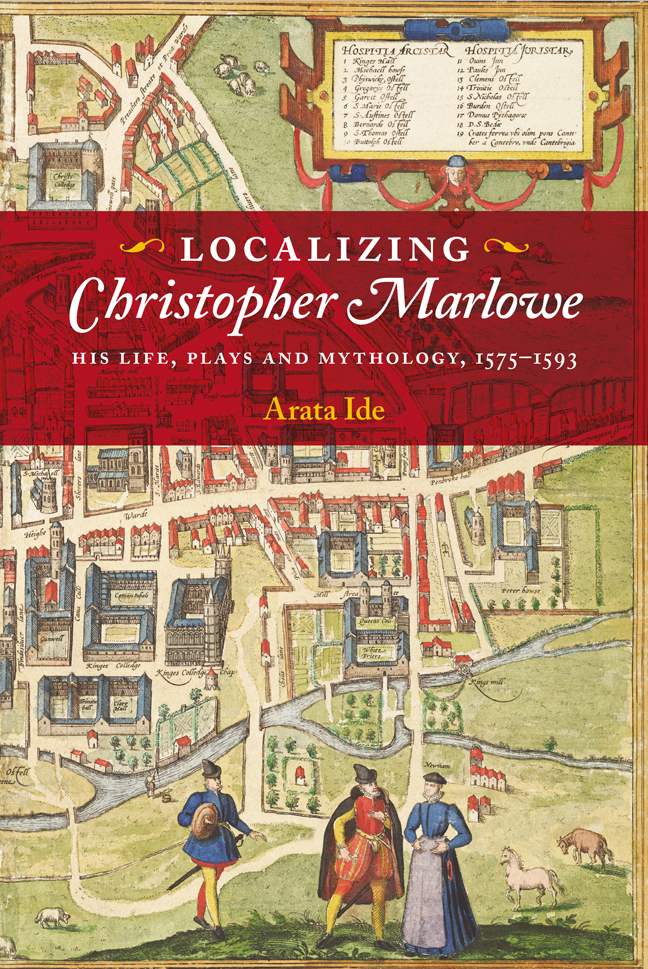Book contents
- Frontmatter
- Dedication
- Contents
- List of Illustrations
- Acknowledgements
- List of Abbreviations
- Timeline
- Note for the Reader
- Introduction
- Part I Life
- Part II Plays
- Part III Myths
- Conclusion
- Appendix 1 Transcript of the plan in Norfolk Record Office, NRS 23372, Z99
- Appendix 2 Transcript of the plan in Corpus Christi College Archives, CCCC08/28
- Appendix 3 Transcript and translation of the John Marley vs Nevell Hayes case
- Appendix 4 List of Foundation Scholars of Corpus Christi College, 1573–87
- Bibliography
- Index
- Miscellaneous Endmatter
10 - The Genesis of the Marlowe Myth
Published online by Cambridge University Press: 22 February 2024
- Frontmatter
- Dedication
- Contents
- List of Illustrations
- Acknowledgements
- List of Abbreviations
- Timeline
- Note for the Reader
- Introduction
- Part I Life
- Part II Plays
- Part III Myths
- Conclusion
- Appendix 1 Transcript of the plan in Norfolk Record Office, NRS 23372, Z99
- Appendix 2 Transcript of the plan in Corpus Christi College Archives, CCCC08/28
- Appendix 3 Transcript and translation of the John Marley vs Nevell Hayes case
- Appendix 4 List of Foundation Scholars of Corpus Christi College, 1573–87
- Bibliography
- Index
- Miscellaneous Endmatter
Summary
RALEIGH'S SCHOOL OF ATHEISM
The proclamation dated 18 October 1591 and titled A Declaration of Great Troubles Pretended against the Realme by a Number of Seminarie Priests and Jesuists expresses open hostility towards English seminaries financially supported by Philip II, the King of Spain, and deep concern about ‘a multitude of dissolute young men’ who had gathered together to ‘become fugitives, rebels, and traitors’. This proclamation is presumed to have been drawn up by William Cecil, who uses harsh and sardonic words throughout the text. One of the passages in which we can detect his bitterness is where he condemns the seminaries as a hotbed of sedition:
there are in Rome and Spain and other places certain receptacles made to live in and there to be instructed in school points of sedition, and from thence to be secretly and by stealth conveyed into our dominions with ample authority from Rome to move, stir up, and persuade as many of our subjects as they dare deal withal to renounce their natural allegiance due to us and our crown.
Cecil is particularly furious with ‘the heads of these dens and receptacles’, whom he assumes have recently motivated Philip to renew his war against England by assuring him that a multitude of young Catholics would be ready to assist his invasion. Cecil specifies two of the ringleaders, with heavy sarcasm: ‘a schoolman named Parsons, arrogating to himself the name of the King Catholic's Councilor’ and ‘another scholar called Allen, now for his treasons honored with a cardinal's hat’. While his malicious wording may seem peculiar, it shows how wary he was of these institutions. He imagined discontented students debating the key issues for sedition under the guidance of a headmaster who was well versed in the methods and teachings supporting treason.
Although we do not know why Cecil coined the phrase ‘school points of sedition’, he might have picked up the expression from Martin Marprelate. In 1589, Martin published the broadsheet Certain Mineral and Metaphysical Schoolpoints, which he possibly designed on the model of the Cambridge ‘act verses’: the set of briefly propounded theses that were circulated by those taking part in public disputations as acts for degrees, to offer a mock academic debate. However, it is more likely that Cecil was responding to William Allen's defence of English Catholic semi-naries on the continent as ‘the noblest Schooles in Christendom’.
- Type
- Chapter
- Information
- Localizing Christopher MarloweHis Life, Plays and Mythology, 1575-1593, pp. 296 - 334Publisher: Boydell & BrewerPrint publication year: 2023



